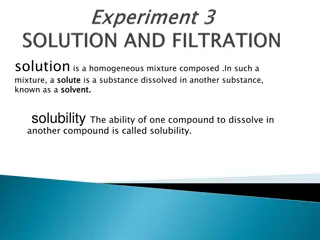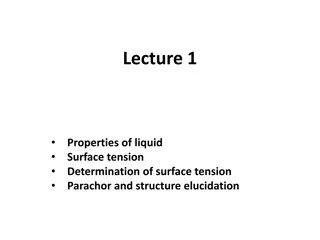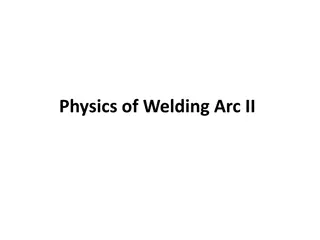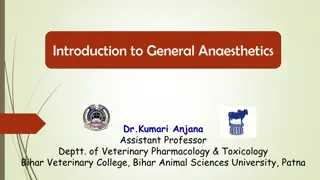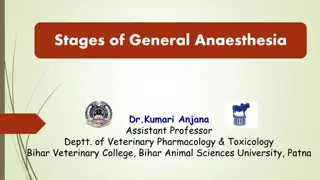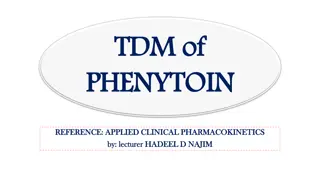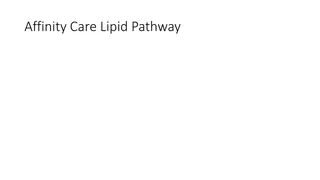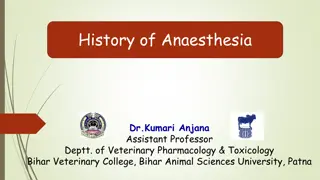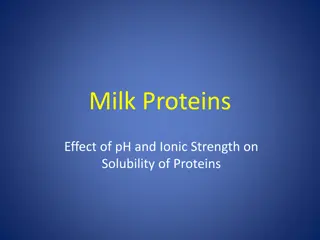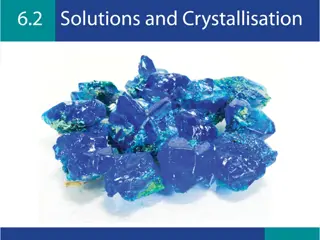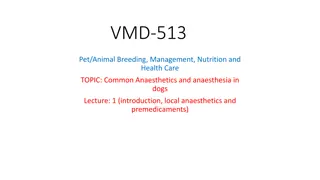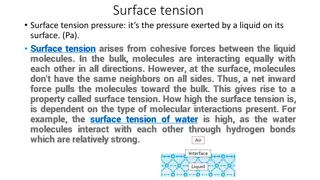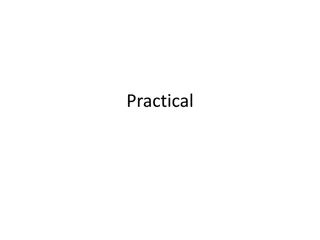Mechanism of General Anaesthesia Theories: Lipid Solubility, Surface Tension, Microcrystal, Protein Binding
Mechanism of general anaesthesia involves theories focusing on the interaction of anaesthetics with cell membrane components like lipids and proteins. The Lipid Solubility theory emphasizes the importance of an anaesthetic's affinity and solubility in nerve cell membranes, while the Surface Tension theory highlights alterations in transmembrane ionic permeability. The Microcrystal theory suggests formation of ice crystals to disrupt nerve cell impulses, and the Protein Binding theory discusses anaesthetics binding to proteins in nerve cell membranes.
Download Presentation

Please find below an Image/Link to download the presentation.
The content on the website is provided AS IS for your information and personal use only. It may not be sold, licensed, or shared on other websites without obtaining consent from the author. Download presentation by click this link. If you encounter any issues during the download, it is possible that the publisher has removed the file from their server.
E N D
Presentation Transcript
Mechanism of General Anaesthesia Dr.Kumari Anjana Assistant Professor Deptt. of Veterinary Pharmacology & Toxicology Bihar Veterinary College, Bihar Animal Sciences University, Patna
Theories of General Anaesthesia (Mode of action) MOA of GA has been studied for many decades but still there is no clear explanation. GA belong to different chemical classes and can produce anaesthesia in variable ways. Anaesthetics appear to act principally on the cell membrane. Theories of General Anaesthesia focus primarily on the interaction of anaesthetics with component of cell membrane - Lipids, Proteins
Lipid solubility theory of Overton and Meyer (1901) Compounds with high lipid solubility easily penetrate the CNS, being rich in lipids, and alter the function of nerves. Theory: Potency of an anaesthetic is directly proportional to its affinity and solubility in lipid portion of the nerves. Higher the partition coefficient, higher the potency of anesthetics Solubility in Fat / Solubility in Water = Partition Coefficient. Figure: Interpretation of the cut-off effect in the frame hypothesis of anesthetic mechanism. off lipid
Surface Tension or Adsorption Theory of Traube (1904) Ability of the agent to reduce the surface tension of the neuronal membrane by adsorption. Alters the transmembrane ionic permeability across the neuronal membrane and interfere with nerve function (generation of AP), resulting into anesthesia. Warbung (1921, 1930) : Accumulation of narcotic agent on cell surface caused alteration of metabolic processes, permeability and neuronal transmission resulting in anaesthesia. Elements and Wilson (1962) : Nitrous oxide, cyclopropane, halothane and chloroform lower the surface tension.
Microcrystal Theory of Pauling and Miller (1961) Anesthetics facilitate formation of microcrystals or iceberg/clathrates: (anesthetics hydrate crystals) ice crystals within the nerve cells and thus disrupt conductance of impulses. Impede ionic mobility, electrical charge, and chemical and enzymatic activity of the brain, (produce depression and unconsciousness). This theory does not explain anesthesia produced by barbiturates and some other anesthetics.
Protein Binding Theory of Frank and Lieb (1982) Anaesthetics reversibly hydrophobic domain of a protein or by concentrating at the lipid-protein interface in the nerve cell membrane. The binding causes expansion of the nerve membrane and thus interferes with the function of nerve membrane proteins. act by a binding to
Bulky accumulate inside the neuronal cell membrane causing its distortion and expansion (thickening) due to volume displacement. and hydrophobic anaesthetic molecules Membrane thickening reversibly alters function of membrane ion channels thus providing anaesthetic effect. Actual chemical structure of the anaesthetic agent was not important, but its molecular volume plays the major role: the more space within membrane is occupied by anaesthetic - the greater is the anaesthetic effect.
Receptor Theory Anaesthetics act by interacting with the NT receptors (as agonists of inhibitory transmitters, GABA and glycine or antagonist of excitatory transmitter, glutamate, Ach and 5-HT,) in the CNS. Anaesthetic agents affect synaptic transmission rather than axonal conduction. GABAA receptors - Halogenated anaesthetics (halothane, enflurane, isoflurane & sevoflurane) and some injectable anaesthetics like barbiturates, propofol, etomidate and neurosteroids. Glycine receptors - Propofol, Barbiturates. NMDA (N-methyl-D- aspartate) receptors -Ketamine, N2O.
Ion Channel Theory Anaesthetic bind to voltage-gated ion channels and reduce excitability or promote inhibition of nerve membrane.







